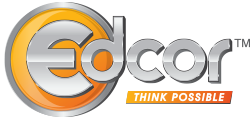The media is abuzz with the August 24 historic announcement about the Biden-Harris administration’s federal student loan forgiveness for individuals making less than $125,000 annually, a final extension to the payment freeze on student loan repayments till December 31, 2022, and a proposal on steps to create an income-driven repayment (IDR) plan.
The forgiveness aims to get some of the debt off the books for young people who are being stymied by it and to help the middle- and lower-income rungs of the ladder. It is being seen as a step towards racial and social equality as it benefits people of color and people who take jobs that help society function like teachers, federal employees, state and municipal employees, and frontline workers.
Let’s review some key elements and consequences of this, and what it means for the borrowers and Corporate America at large.
Key Points
- Federal Student loan borrowers will see up to $20,000 wiped off their debts depending on their outstanding amount.
- The forgiveness applies only to Federal owned loans, private loans are not eligible.
- Student loans taken out after June 30, 2022, will not be included in the relief.
- High-income borrowers (Top 5%) will be excluded from receiving the forgiveness.
- Individuals who earn less than $125,000 annually and households with married couples with less than $250,000 annual incomes will see up to $10,000 of their federal student debt wiped off.
- An eligible borrower who also received a Pell Grant while in college will be eligible for up to $20,000 in debt forgiveness.
- Graduate, undergraduate, and Parent PLUS loans with the Dept. of Ed. are all eligible.
- Defaulted federal loan students are eligible for debt relief under the Department of Ed Fresh Start program.
- Individuals who have been making 0% interest payments during the payment pause period of Covid-19 can contact their loan servicers and request refunds. After receiving the refunds, the new balance will be the outstanding student debt plus the refund. The next step would be to apply for the relief under Biden’s plan for this new amount.
Who will it benefit?
It doesn’t apply to anybody who went to a state school and paid for all of it, people who have already paid for their student loan debts, people who took private loans, or people who chose different career paths and did not go to college.
According to The Penn Wharton Budget Model which presents a breakdown of the share of forgiveness by income group, about 75% of the benefit goes to households making less than $88,000 annually. The forgiveness will benefit 43 million borrowers overall who qualify in some way, 27 million borrowers are eligible to receive $20,000, and 20 million U.S. citizens will have a zero balance on their student loans as a result of this relief.
And yet, it doesn’t take away from the fact that Student loan debt is the second highest debt in America – only next to mortgages. Even though forgiveness is a relief to millions, it’s not an ultimate solution to the systemic issue of high college fees and ever-increasing costs associated with getting a degree.
The Edcor whitepaper on “Three pronged strategy to solve the student loan crisis in America”, talks about how borrower prudence and Government reliefs alone are insufficient to solve the crisis. Corporate America needs to pitch in too and shoulder some of the burdens since the degree holders are eventually working to elevate their bottom line.
What it means for Corporate America?
As a CHRO, naturally, you may be re-evaluating the tenacity of student loan repayment assistance benefits. It is wise to communicate to your workforce to take advantage of the benefit to see if they can get a part of their student loans wiped off under the relief.
Here are the next steps for corporate employees with Student debts:
- Find out if you have private loans or federal loans.
- Talk to your loan servicer to know the outstanding amount or if you are eligible for refunds for payments made during the Covid-19 payment pause period (March 13, 2020, to now).
- If you don’t know it, find out if you received a Pell grant while in college by logging on to studentaid.gov.
- Verify your income with the U.S. Department of Ed., and submit an application. Applications will be available in early October.
- Apply before November 15 to receive relief before the payment pause extension date of December 31.
- Sign up for alerts from the Dept. of Ed for new developments on the matter here.
5 reasons why organizations must still help employees with Student Loan Repayment Assistance
Irrespective of the relief being applicable to your employees or not, organizations must continue efforts to help their workforce with student loan repayment assistance. Let me bring some facts to the fore and give you our perspective.
- The forgiveness is a temporary relief to Americans, not a long-term solution to the student loan crisis. It may not cover existing and future student debts owing to the massive budgetary costs.
- The relief is not available to everyone, especially ones with private loans.
- There are low-income groups who may still struggle to prove their income eligibility with the Department of Ed and thereby not benefit from this relief.
- Millions of Americans did not complete their degrees and still have outstanding debts. These individuals – usually your low-income frontline – may not be fully covered by the relief plan, but could use the employer benefit dollars to pay off their remaining student loan debts.
- The corporate workforce with higher outstanding balances and non-Pell grant recipients will still need employer student loan repayment assistance benefits to pay off their loans.
The above speak to the fact that student loan repayment assistance is a vital benefit, and an attractive recruitment and retention strategy.
The more I think of it, the more it gets clear that the fourth wheel or the missing cog in the puzzle to resolve the student debt crisis is the colleges themselves.
At Edcor, we have tried to address this systemic issue with the help of our Debt-free offerings from our school network partners. This is particularly helpful for client employees who have $5250 or above in annual tuition assistance. With the help of the employer’s annual tuition benefits and the discounts from schools, employees can fulfill their higher education goals with minimal or zero out-of-pocket costs leading to no debt once they finish their degree.
For clients offering tuition assistance and student loan repayment assistance, the amount of $5250 is tax-free and benefits above the limits may be taxed. Even though we are not tax experts, as an added service, Edcor can help calculate what it finally comes down to for organizations and their employees.
So, what are you waiting for? Let’s Future Together and Make your possible go further!

Edcor is a woman-owned business and is the benchmark in education benefits administration. For 40+ years, our customized service and solutions have allowed Fortune 500 Clients to use education benefits programs for employee recruiting, retention, and development. Reach out to us now for zero-commitment consultation on implementing an education benefits program.
Adrienne Way, CEO, Edcor



